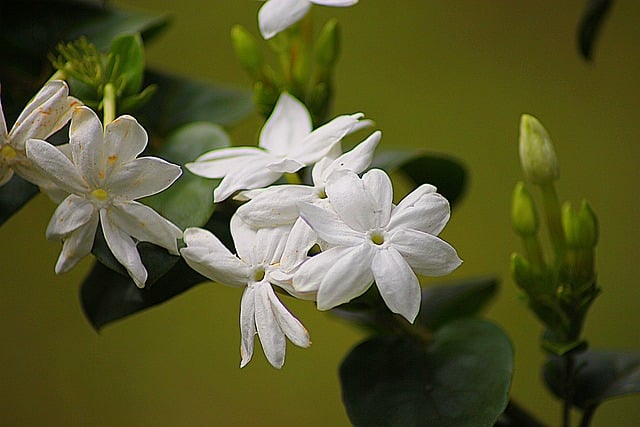
Jasmine – Tunisia national flower
The national flower of Tunisia is Jasmine. Its scientific name is Jasminum. The Tunisian Jasmine is also a native plant of India and Sri Lanka, but it also grows wild in many areas of Africa, South America and Europe.
It is found in Tunisia different shapes, colors and sizes. It is a shrub of the Oleaceae family and it has small white flowers. The Jasmine flower is used in perfumes, cosmetics and medicine. It is also used in cooking and as an ornamental plant. Its fragrance can be smelled from miles away and its flowers are often used as an essential oil to make perfume products such as shampoo, soap and lotion.
Scientific Classification
Genus: Jasminum
Family: Oleaceae
Class: Magnoliopsida
Kingdom: Plantae
Jasmine Flower Meaning
The jasmine flower is one of the most popular flowers in the world. It is known for its sweet smell and beautiful blooms. The jasmine flower has many different meanings and symbolic uses, but it is most often associated with love, purity and innocence.
- White Jasmine – Purity
- Yellow Jasmine – Joyfulness
- Orange Jasmine – Happiness
Interesting Facts about Jasmine
- Jasmine is the official national symbol and flower of Tunisia.
- Jasmine flowers are often used as wedding flowers because they symbolize purity and devotion
- Jasmine is a genus of about 200 species of flowering plants in the olive family Oleaceae.
- The flowers are white and fragrant.
- The plant has separate male and female flowers on different plants (dioecious). Both types are borne on the same plant but only one sex can be seen at a time because they bloom at different times of year. In some species, all individuals flower exclusively as either male or female, while in other species all individuals can produce both sexes; these are then said to be protandrous or protogynous respectively.
- Jasminum officinal essential oil is an important ingredient in perfumes and soaps, where it typically serves as an aroma component rather than as a fixative (an ingredient that helps retain the scent). It also appears in many other consumer products such as shampoos, lotions, cosmetics, etc., and it is used in traditional medicine preparations from India to Morocco to treat various ailments including fever
- The jasmine flower has five petals with a star shape at the center where it has two stamens that are connected by a filament which contains pollen.
- Jasmine prefers warm weather and grows best in tropical climates like those found in Tunisia, India and China where temperatures never fall below 60 degrees Fahrenheit (16 degrees Celsius).
- Jasmines are known for their beautiful fragrance which attracts pollinators such as hummingbirds, bees and butterflies who play an important role in fertilizing plants so they can reproduce and continue growing year after year!
Why is jasmine the national flower of Tunisia?
The people of the country considered Jasmine as Tunisia’s national flower because of its sweet fragrance and soothing effect on the mind. It is also said that Jasmine was used in ancient times to treat anxiety and stress by placing in beds, so that they would breathe its scent while sleeping. It represents the beauty of Tunisia and its people. It has a strong fragrance and this symbolizes the courage of Tunisians who fought for their freedom during the Arab Spring. Its flowers are white or yellow in color and this represents peace, freedom and unity among the Tunisian people.
So, due to all these facts and qualities it was officially declared the national flower of the country.
